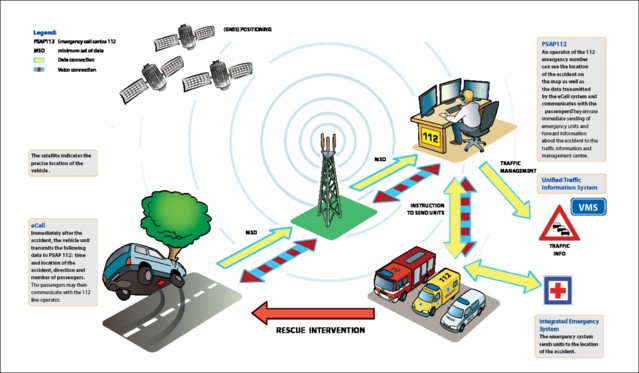
Road Network Operations
& Intelligent Transport Systems
A guide for practitioners!

Road Network Operations
& Intelligent Transport Systems
A guide for practitioners!
Driver services were initially developed with the private sector in mind – but are now also widely deployed at the local, national and international levels – for example, eCall and stolen vehicle tracking.
The eCall concept builds on the roadside assistance using in-vehicle systems to automatically detect that an accident has occurred and call for help – a common indicator being airbag deployment. Implementation of the concept relies on capturing appropriate information from the vehicle and passing it to a local emergency responder. This can be challenging to implement:
A great deal of work is underway to address these and similar challenges worldwide. The European Union’s HeERO project, has been testing and validating under real-life conditions, pilot tests using the common European eCall standards which have been defined and approved by the European Standardisation Bodies. (See http://www.heero-pilot.eu/view/en/home.html) The system uses GPS and digital cell-phone communications to automatically initiate a 112 emergency call to the nearest emergency centre to transmit the exact geographic location of the accident scene together with other data. The system is illustrated in the figure below - The European Commission’s target for deployment of the European Union’s eCall system is 2018.

A vehicle owner can initiate tracking of a stolen vehicle if it is equipped with a location device, communications capabilities, the appropriate software and is registered with a recovery service provider. Alternatively, the vehicle may signal a problem to the owner if its location strays off-route or beyond a predetermined set of boundaries. This tracking information can be used by the police and recovery service providers. This technology and any associated services are used by vehicle fleet operators – particularly where fleets:
Brazil’s State Transport Department (DENATRAN) has been working towards mandating such systems through its CONTRAN 245 legislation.